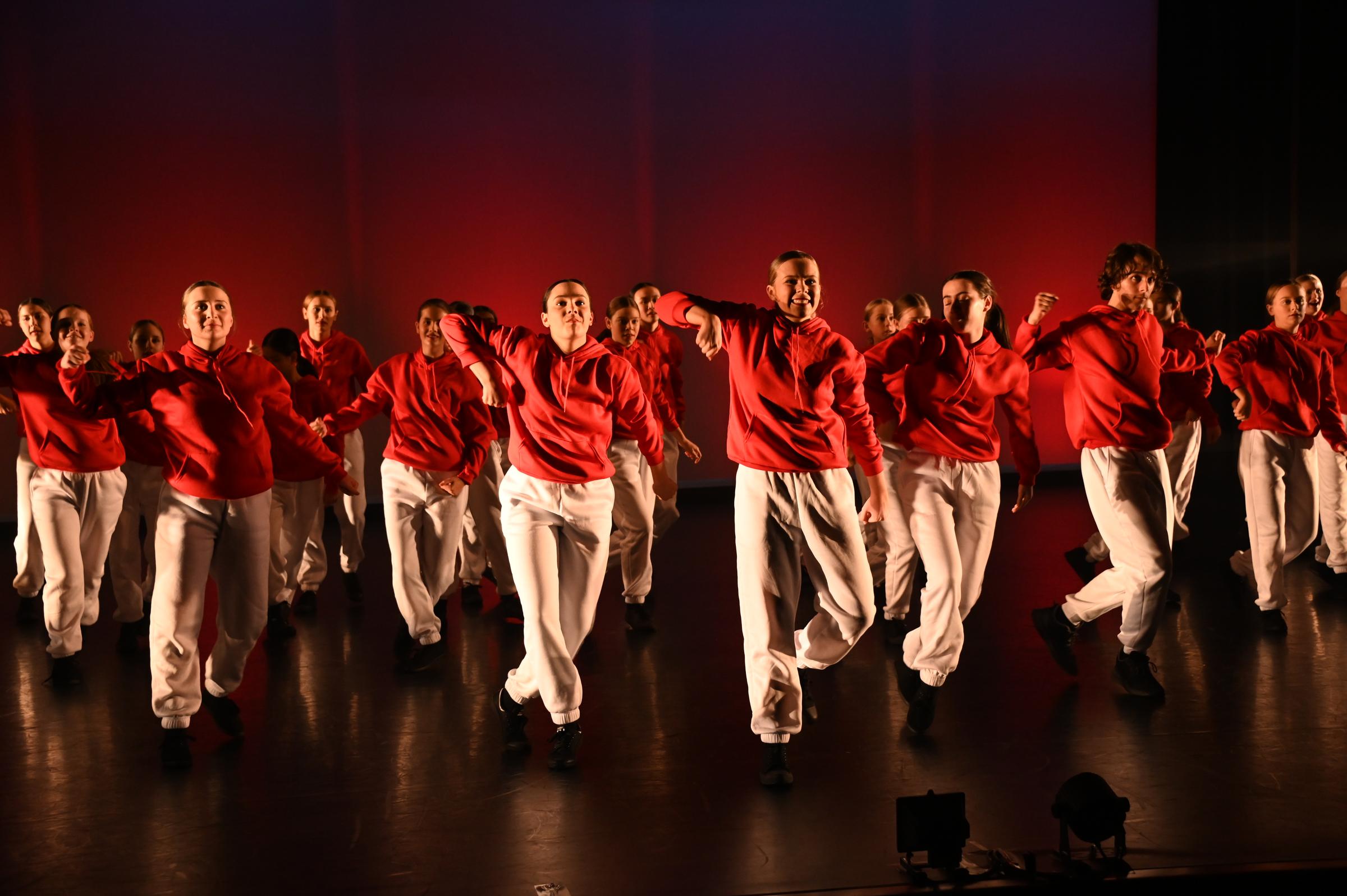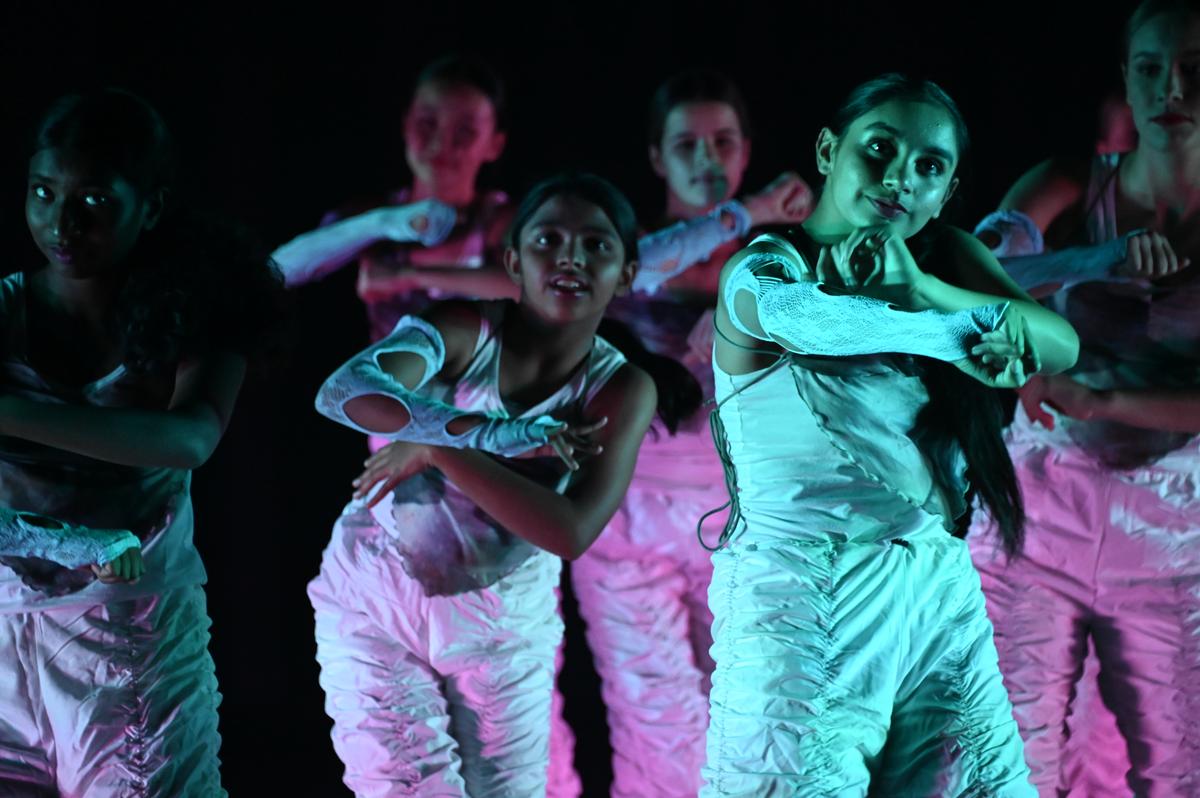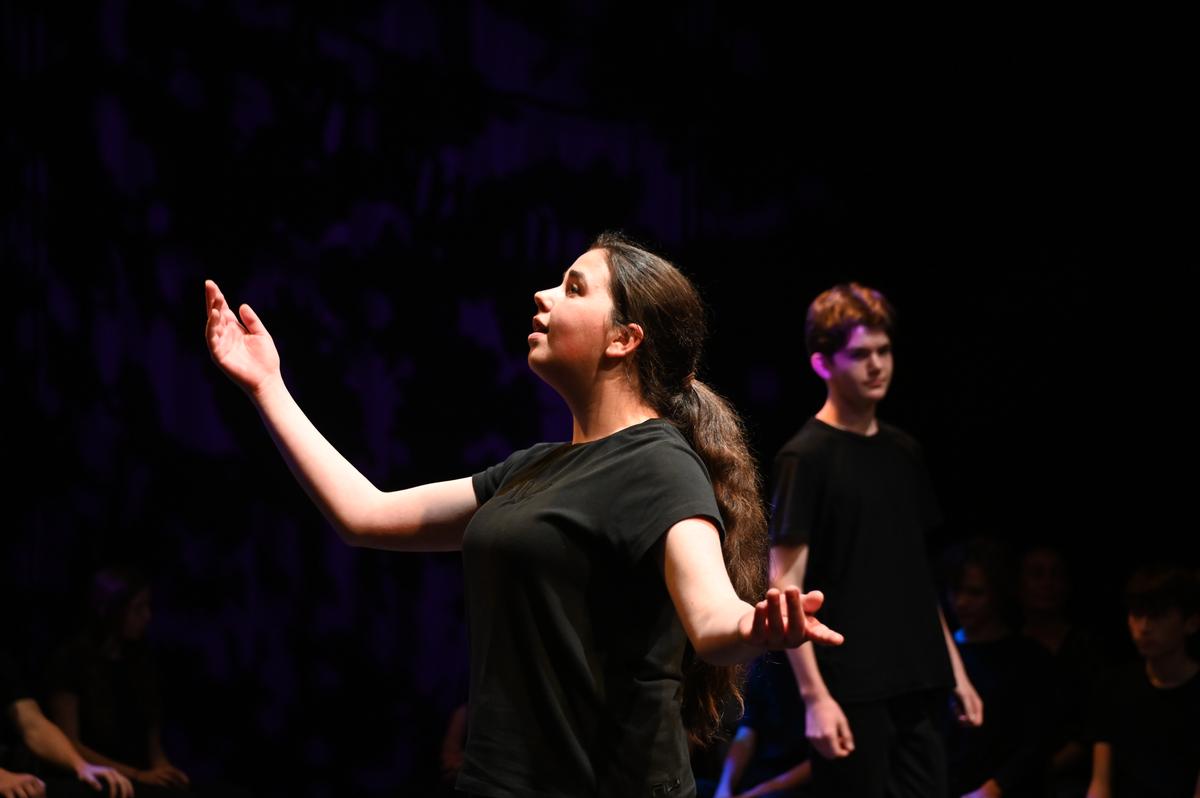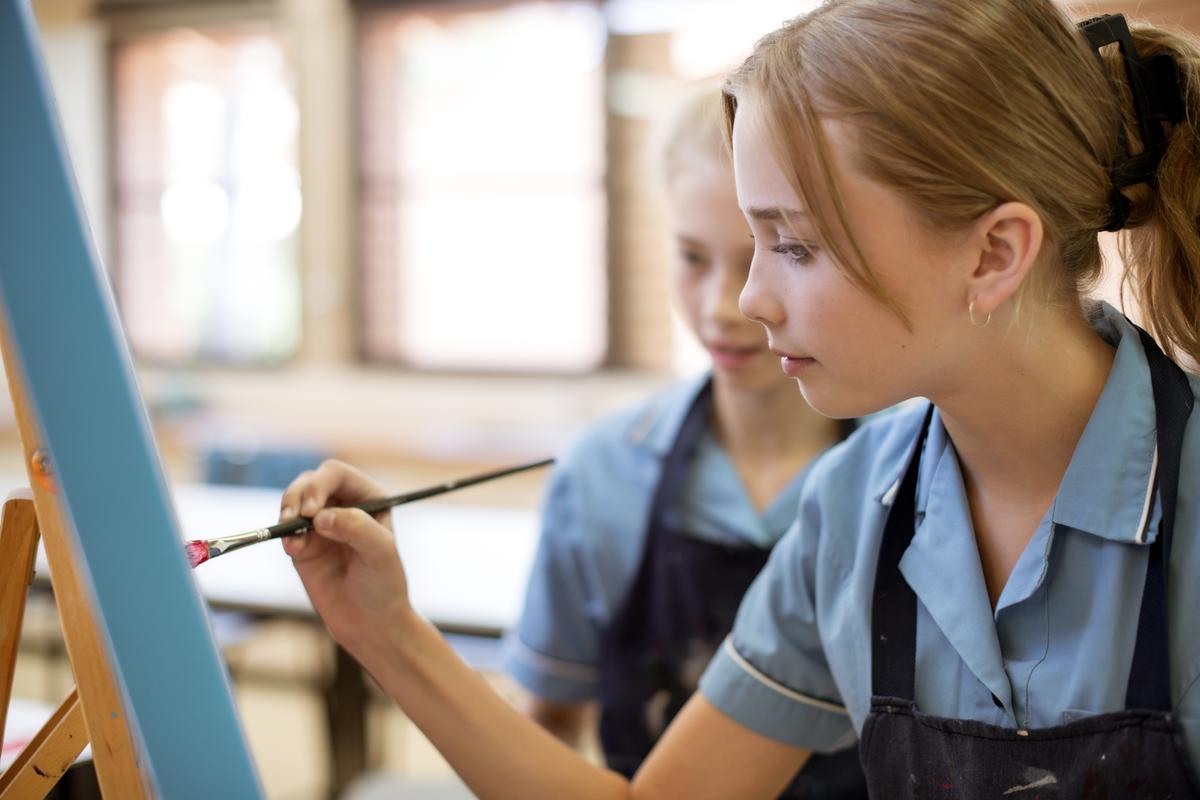THE ARTS - CURRICULUM OPTIONS

DANCE CONCERT PERFORMANCE (SEMESTER 1)
Students will learn dance techniques in multiple genres and perform two new dance works in the College Dance Concert. As dancers you will develop body awareness, alignment, physical fitness and musicality through learning two different styles of dance as well as learning methods for your own creative expression through movement. You will be immersed in the creative process learning from staff and professional dancers. Dancers will learn how to work both collaboratively and independently through the choreographic process developing critical thinking and expressing ideas in physical form. Students will view professional works to inspire their own practice and learn about the human body and anatomy to understand how the physical body works.
Students should consider this unit if they are contemplating ATAR or General Dance. Students can select Dance Concert Performance in both Years 9 and 10 if they wish as technique and choreography will be different.
Please note that if you are currently on a Dance Scholarship you are strongly encouraged to take Dance each semester.
DANCE SHOWCASE (SEMESTER 2)
Dance students will be guided through the choreographic process to create two works for the Dance Showcase. One work will be guided by staff and industry professionals and the small group projects will allow students to choreograph and design their own dance work. Students will be guided through progressions and technique exercises, improvisational practices and tasking, and creative processes to build the skills to develop their own work. Self-expression is encouraged where dancers portray their own ideas through movement. As an art form, Dance encourages artistic creativity and the active use of the imagination. Dancers will play, explore and improvise to create new moves and choreography in the genre(s) of their choice guided by staff and professional dancers.
Students will have the opportunity to learn about lighting, sound and multimedia and design their own works for performance. Students will develop transferable skills including communication skills, collaborative teamwork skills, negotiation and conflict resolution skills, problem-solving skills, as well as the ability to organise.
Students can select Dance Showcase in both Years 9 and 10 if they wish as the contexts and choreography will be different. Students should consider this unit if they are contemplating ATAR or General Dance.
Please note that if you are currently on a Dance Scholarship you are strongly encouraged to take Dance each semester.
DRAMA SCRIPTED PRODUCTION (SEMESTER 1)
Students will work as actors and or designers in their own company to create a fully realised scripted performance for a live audience. The performance will offer an opportunity for students to engage in all elements of production, including lighting, set, sound, and costume design as well as directing and acting. Through the creative process students will develop their empathy, teamwork and leadership skills as they take the responsibility for the production and the company.
This course is designed for students of all different abilities and experiences. It will be flexible and adapt to the interests and skills of the group, providing a variety of different roles to suit each student’s passions. The class will invite guest directors and actors to work on, coach and direct in class as we create the production.
Please note that if you are currently on a Drama Scholarship you are strongly encouraged to take Drama each Semester.
DRAMA PRODUCTION 2 (SEMESTER 2)
Students will form part of a theatre company as they create a performance for a live audience. Students will be exposed to a range of theatrical styles such as devising, musical theatre, absurdism, puppetry, Youth theatre and have the opportunity to work as an ensemble to realise a production in a theatrical space. The performance will offer an opportunity for students to engage in all elements of production, including lighting, set, sound, and costume design as well as directing and acting.
This course is designed for students of all different abilities and experiences. It will be flexible and adapt around the interests and skills of the group, providing a variety of different roles to suit each student’s passions. The class will invite guest directors and actors to work on coach and direct in class as we create the production.
Students may take either Drama Production 1 or 2, or both units for the year.
Please note that if you are currently on a Drama Scholarship you are strongly encouraged to take Drama each semester.
MEDIA PRODUCTION - FILMMAKING (SEMESTER 1)
This course focuses on the genres, styles and movements of film. Students will develop their existing knowledge of using cameras, lenses, tripods, rigs, microphones and editing software in production, to allow them to tell screen stories in live action, animated or hybrid mediums. They will take inspiration from the classics of cinema to create their own stories and experiment with ways of communicating ideas.
Students can select Media Production (Filmmaking) in both Years 9 and 10 if they wish as production contexts will be different.
MEDIA PRODUCTION - FILM AND TELEVISION (SEMESTER 2)
This course immerses students in the world of film and television media production. Students will continue their learning about film production and gain an insight into the world of television production. They will also continue to develop practical production skills, such as, sound recording techniques, cinematography and editing. Students may choose this course as a follow on from the semester one ‘Filmmaking’ course or as a stand-alone option.
Students can select Media Production (Film and Television) in both Years 9 and 10 if they wish as production contexts will be different.
VISUAL ART - TRADITIONAL DRAWING (SEMESTER 1)
Want to improve your drawing skills? In this unit, students will explore a series of drawing workshops to improve their traditional drawing skills. These skills and techniques can then be applied to a variety of traditional art-making practices including portraiture, landscapes, still-life, and perspective drawing. The resolved artwork will be a self-portrait in graphite.
Students will learn some of the following skills:
- Traditional drawing techniques including tonal shading, cross-hatching, stippling using pencil and charcoal
- Observational drawing, relating to still lifes
- Proportion and composition in portraiture
- Landscape drawings that utilise space and depth
This unit is designed to extend students’ knowledge and practise in the creation of two-dimensional artworks. Students continue to explore artistic influences, while being encouraged to express greater individualism in their application of techniques and media.
Students extend their knowledge and practice of safe and sustainable visual arts practice. Resolved artwork is exhibited and appraised, with consideration to their own artistic intentions, personal expression, and audience
VISUAL ARTS CERAMICS - HAND BUILDING (SEMESTER 1)
Love getting a little messy…. why not explore the delightful world of clay? The flexibility of hand building with clay offers endless opportunities for creating a variety of forms. This unit will introduce students to the fundamental hand building techniques of pinching, coiling and slab building. Using these techniques, students will create a range of sculptural objects and explore the variety of surface decoration and finishes.
Students will learn:
Ceramic techniques
- Pinch pots
- Coil pots
- Slab construction
Glazing techniques
- Shellac resist
- Oxide staining & under glazing
- Speciality glazing
Students will extend their knowledge of art practices, such as manipulation and the control of clay, and use their understanding of a variety of ceramic styles in the making of their own 3D artwork.
Students extend their knowledge and practise of safe and sustainable visual arts practice. Resolved artwork is exhibited and appraised, with consideration to their own artistic intentions, personal expression, and audience.
VISUAL ARTS - EXPERIMENTAL PRINTMAKING (SEMESTER 2)
This class is for those who love to learn new art techniques and experiment with a variety of different media. Printmaking is an extremely versatile and creative medium as numerous techniques and processes can be used to achieve a variety of effects. To make a print, an artist applies ink to paper not by directly drawing on its surface, but through a transfer process, which results in multiple originals. You will learn etching, lino-cutting, gelli plate printing and mono-printing amongst other techniques to create an Artist’s Book inspired by your home and possessions.
Students will learn:
- Contemporary gestural and expressive techniques to design and carve a drypoint etching plate and print it using a printing press.
- Additive and subtractive monoprinting including paper-cut stencil methods.
- How to design and safely carve a lino block and print a reductive print.
- Chine colle
- Other relief based, textural mark making print-making processes including using a gelli plate
This unit is designed to extend students’ knowledge and practise in the creation of two-dimensional artworks. Students will develop greater understanding of contexts of culture, time and place and how these impact on the development of ideas and the production of art forms. Students continue to explore artistic influences, while being encouraged to express greater individualism in their application of ideas and materials.
VISUAL ARTS - URBAN ART (SEMESTER 2)
In this unit you’ll look at how street art has developed from the 80s to now, learn a variety of techniques used by influential street artists and learn how to apply them to skate-decks, tee-shirts and walls.
Students will:
- Investigate influential street-artists from the 80s to now, then develop a concept into a colourful artwork and transfer it to a 9-ply skateboard deck using spray-paint and paint pens.
- Looking at T-shirt art and retro and contemporary graphic design, design a detailed image and expose it on a photographic silkscreen to print multiple identical t-shirts.
- Using machine and hand-cut stencils and freehand spray-painting techniques collaborate with your peers to design and paint a mural on a wall in the school.
Students experience a growing awareness of how and why artists, craftspeople and/or designers are influenced by other artists, their environment and the contexts of culture, time and place. They continue to apply knowledge of techniques used by other artists in the production of their own work.
Students use visual art language and artistic conventions, in both written and practical work. They further develop and refine their ideas and techniques to resolve artwork by documenting the design, production and evaluation processes of their artwork. Students extend their knowledge and practise of safe and sustainable visual arts practice.


